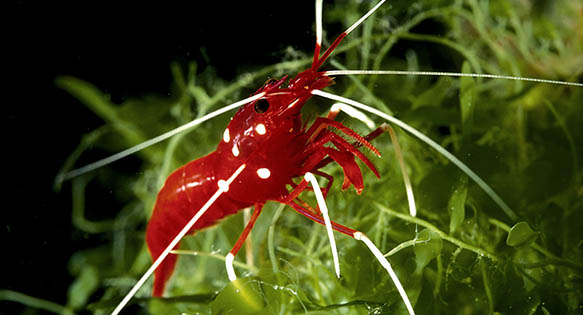
Lysmata debelius, one of the perennial favorites for aquarium hobbyists. But how does it get from the ocean to you? Image by Scott W. Michael/101 Best Marine Invertebrates
In the last weeks of my Southeast Asian travels, I decided somewhat arbitrarily to spend some time in Sri Lanka, another ornamental fish exporting country primarily known in the trade for its intensive aquaculture of fancy guppies. While of course I was interested to visit these freshwater operations, I think it was my fondness for Sri Lanka’s marine offerings that cemented my decision to visit this island nation off the Southeastern coast of India.
I remember admiring the generally excellent quality fish and inverts imported with our weekly Sri Lanka shipments while I was working at Segrest Farms. Whether it was the gorgeous Red Dragonets, Mombasa Lionfish (P. mombasae), or those Eibli angels that always seemed a touch more vibrant than those from any other region, Sri Lankan marine fish always managed to catch my eye during a morning walkthrough of the facility.
It was not the fish, however, but rather a single invertebrate for which Sri Lanka is most known—a longtime reef aquarium staple known as the red fire shrimp (Lysmata debelius). This cleaner shrimp remains one of the driving forces behind the marine aquarium trade in Sri Lanka, and while it is found in several other exporting countries, fire shrimp from Sri Lanka are generally regarded as superior in terms of size, coloration, and hardiness (rightly so, in my opinion).
After a packed week of travel and site visits in the Southern half of the island, the exporter I was visiting with was able to arrange for me to spend the day with aquarium divers as they went out to collect red fire shrimp. Here is a quick look at how this prized aquarium invert makes its way from the Indian Ocean and into home aquariums worldwide:
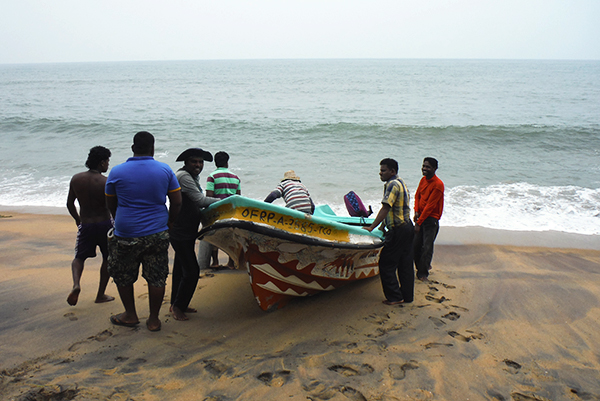
A team of collectors returning from a dive, hauling their boat up on shore in the coastal town of Marawila. Collection of ornamental marine fish and inverts has been an important source of income for coastal communities in Sri Lanka since the earliest days of the marine aquarium hobby. Many collectors I met were 10- or 20-year veterans.
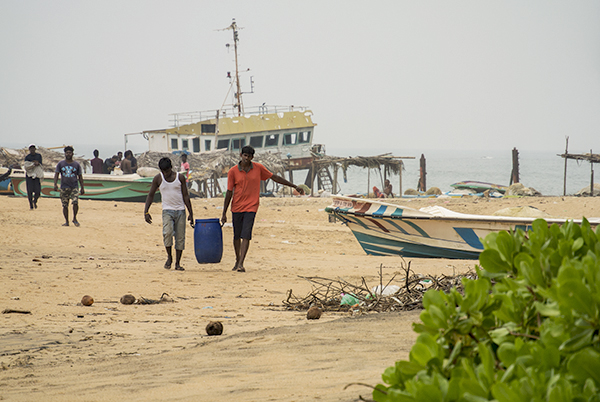
Divers carry their catch in large blue plastic drums, along with an empty drum of clean seawater for packing. This otherwise sleepy fishing port transforms into a frenzy of activity when a boat returns
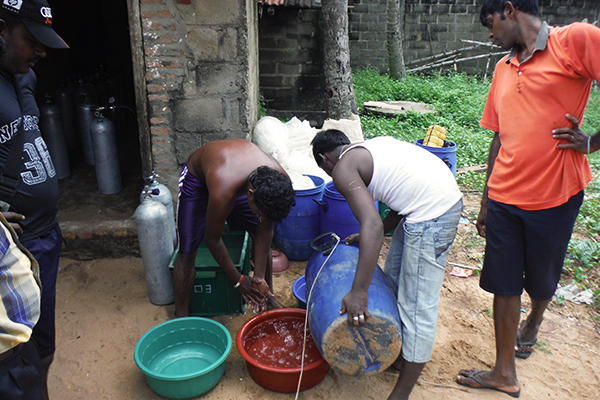
Their catch is carried to their base of operations and transferred into shallow bowls to be sorted and counted. The dive supervisor stands off to the left, observing and checking the counts. The sorting process is fast and efficient, which helps to minimize stress on the delicate inverts
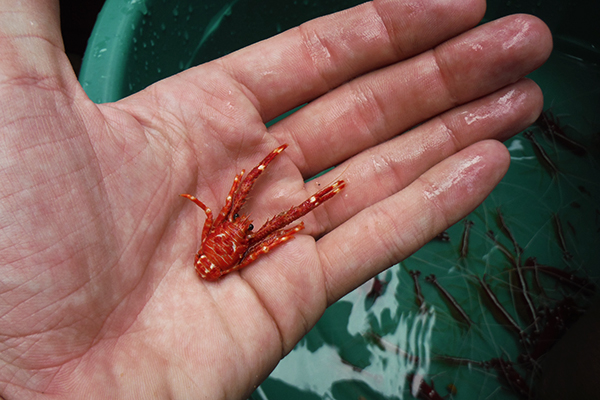
Shrimp are sorted by size, and any that are found to be missing legs or antennae are segregated (as “B grade”). A few pieces of miscellaneous bycatch, like this squat lobster, are also sorted out and counted. Skunk cleaner shrimp, another major Sri Lankan export collected alongside the red fire shrimp, can be seen below
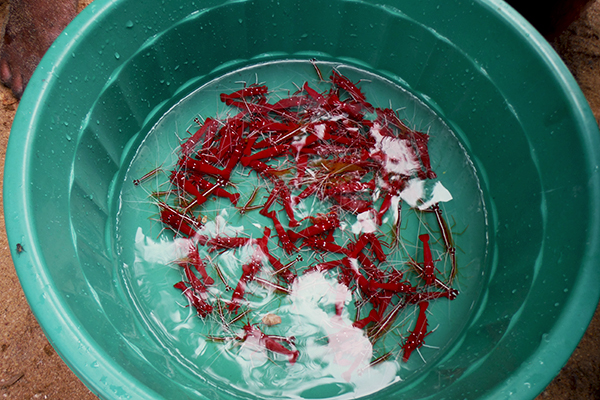
Red gold: one trip’s haul of red fire shrimp, collected at a depth of almost 100ft. The shrimp are collected by hand nets, and often are found in association with moray eels – so the divers must work quickly and very carefully. Teams of divers sell directly to exporters in and around Colombo and receive a relatively high price per shrimp collected.
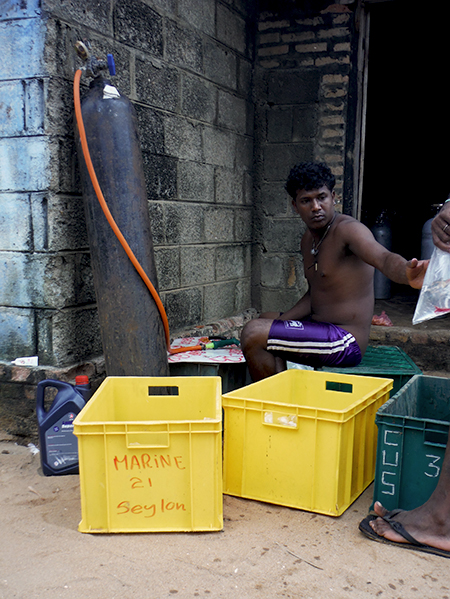
After being sorted, the day’s catch are bagged individually with pure oxygen and loaded into crates for delivery to the exporter. The overall handling and care I observed was exceptional.
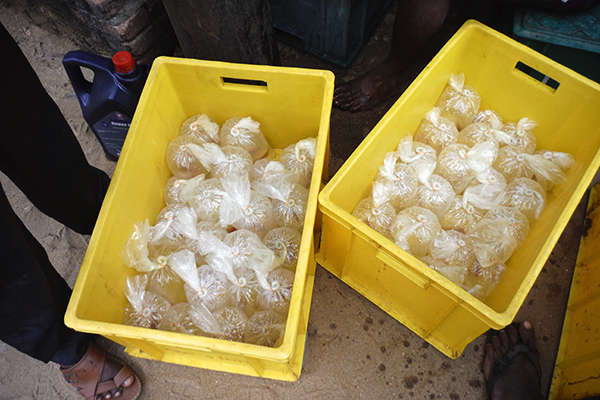
Bagged, packed, and ready. The shrimp will spend no more than a few hours in transit before reaching the export facility, which greatly improves the overall survivability of both shrimps and fishes collected for the aquarium trade in Sri Lanka.
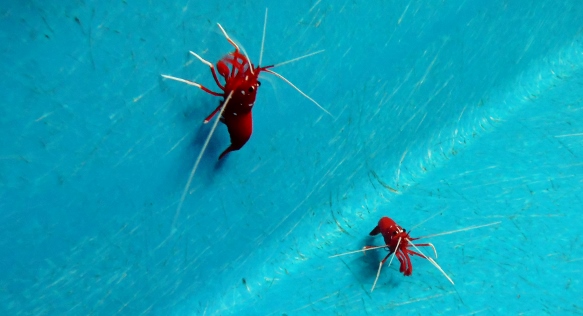
Freshly-collected Red Fire Shrimp, Lysmata debelius, at an exporter’s facility ready to head abroad.
Image Credits:
Introductory Fire Shrimp Image – Scott W. Michael/101 Best Marine Invertebrates
All other images – Mike Tuccinardi
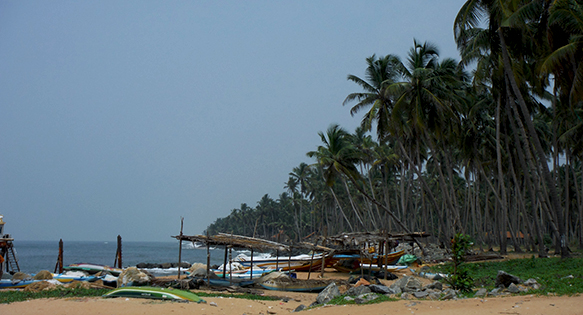





Mike thanks this for great article! Waiting for more
Cheer
Thanks for the great article. I have not kept a fire shrimp in a very long time but might add one to one of my tanks after reading this.
I won’t canect number